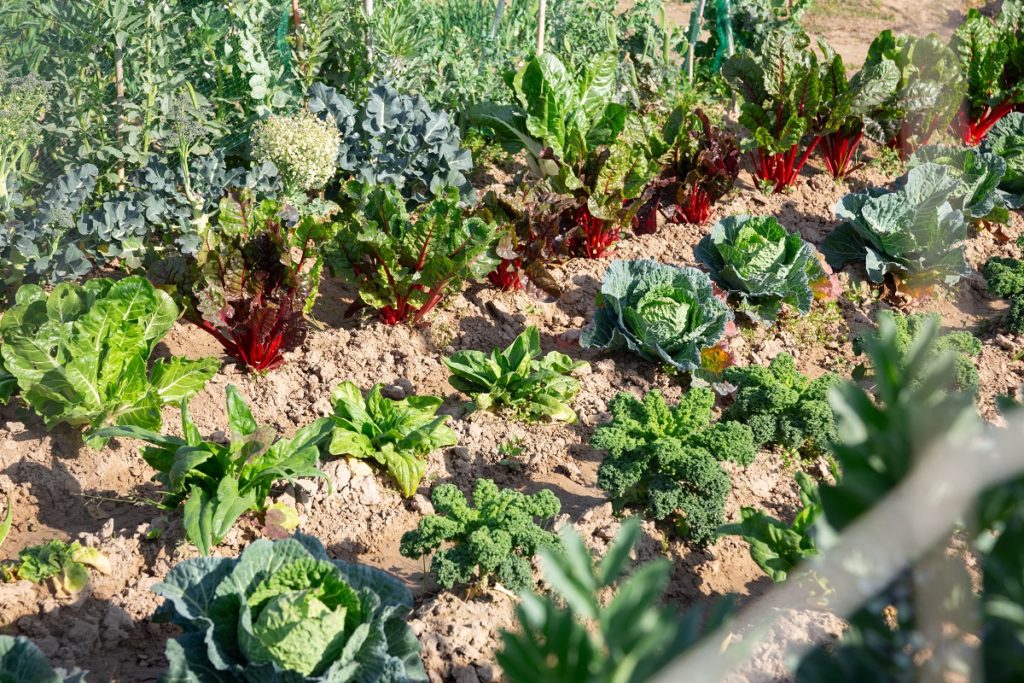
Long winters and short summers don’t exactly make for the most productive growing seasons.
Yet, that is exactly where some of us are at: facing short growing seasons in colder climates. Luckily it is a shortcoming which we can overcome. That is, if we choose our plants wisely.
If you have the gardening gene, nothing is going to stop you from growing at least some of your own food. After all, growing your own doesn’t mean you have to go the survival gardening route. Not at all!
Any time you can supplement your store-bought goods with home-grown nutrition, the better off you and your family will be.
Don’t let cooler weather stop you from growing at least a few of these short-season crops this year.
What defines a short season?
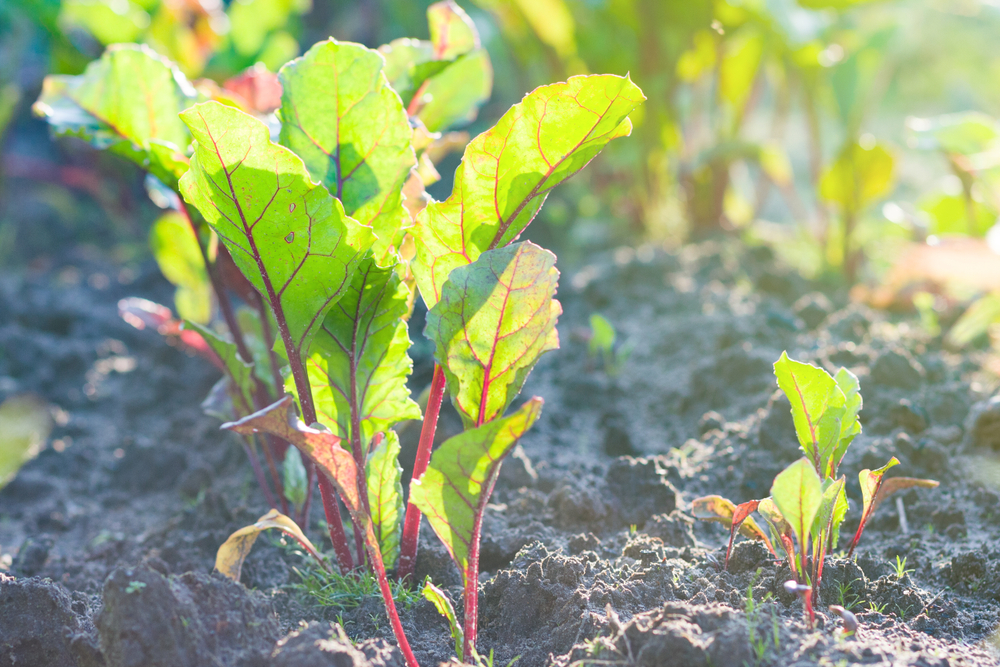
Type in a quick search online and you will find that the definition of a short season crop is varied. Is it 60-90 days that makes up a short season? Or is it anything less than 120 days?
One thing is for sure, a long season it is not. We aren’t talking about sun-ripened, juicy tomatoes here. Albeit, there are at least 12 fast-maturing varieties of tomatoes you can try if your summers are warm and long enough.
The planting of squashes, melons, cucumbers and many herbs will also be out of question, if the number of sunny days is simply not enough for plants to reach maturity.
Naturally, there are some low-cost ways to extend the growing season if you’d like to grow more diverse vegetables in your garden. Everything from greenhouses to row covers, cloches to generous applications of mulch can keep you harvesting longer.
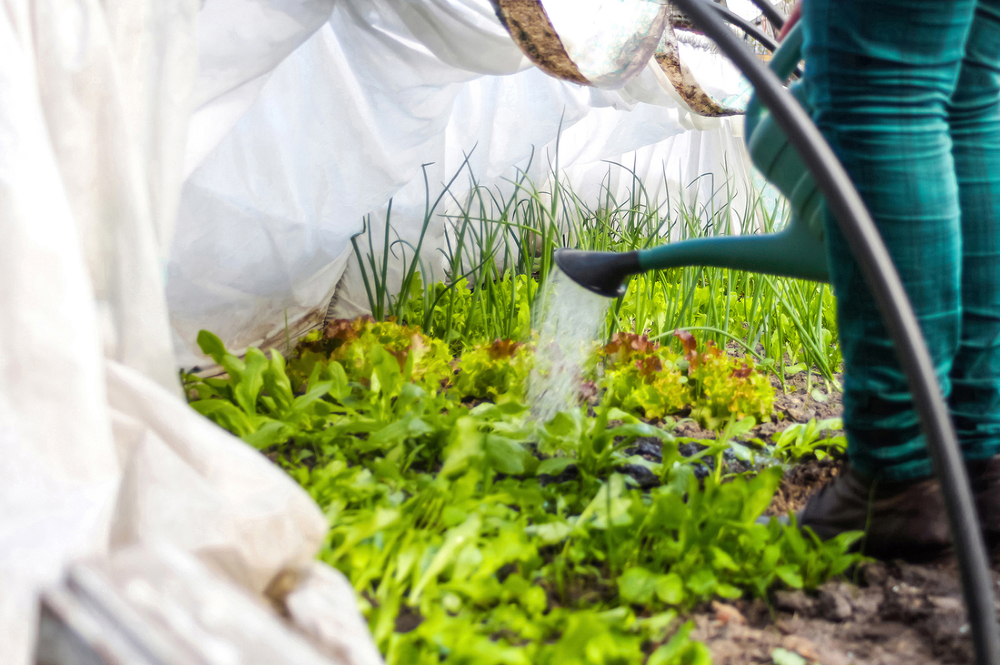
Nowadays, with so much of our global food consumption coming from fruits and veggies that are eaten out of season, the question must be asked: how can we make good food seasonal once again?
It’s a tricky question.
On one side, we all need to eat. And on the other, we should all be eating healthy, nutritious food that is grown in well-maintained soil.
It’s all about finding balance between wanting to eat fresh radishes while it is snowing outside, or thoroughly enjoying them while the trees are just leafing out.
To further confuse “short seasons”, within the field of growing garden crops – there are also short-season vegetables.
Some of them will grow in colder climates, although not all of them will.
Cucumbers, for example, are ready to harvest in 50-70 days. But, they grow best in full sun with temperatures ranging from 65° to 80°F.
We have a homestead and garden in the mountains where there are only a handful of days each summer where it surpasses 70°F. That being said, for us, cucumbers and tomatoes are a definite challenge to grow. Not because they are short-season crops, simply because it never gets warm enough for them to thrive.
If you only have about 100 days out of each year to grow food, you’d better get organized before the short season begins.
Short-season crops for colder climates
The only way to truly know what will grow in your garden, is to try and grow it. You might have short seasons, but also a wonderful little micro-climate. If you do, take advantage of all the warmth it provides.
You can also prepare for gardening in colder climates by planting the right cold-tolerant crops. These can be both annuals and perennials, but since we are focused on short-season crops in this article, we’ll just be discussing those.
By the way, the addition of perennials to your garden, no matter what your growing zone, will always increase the diversity of your diet. Include them everywhere you can!
Short-season annuals and biennial vegetables
As the name implies, seeds of annuals need to be sown and collected – annually. Radishes, beans, peas and zucchini are classic examples of garden annuals.
With biennials, in the case of saving seeds for replanting, you need to wait two years for your seed harvest. Carrots, cauliflower, chard, parsley and turnips all fall into this category.
Related reading: Annuals, Biennials and Perennials – 3 Plant Types You Need To Know
1. Arugula
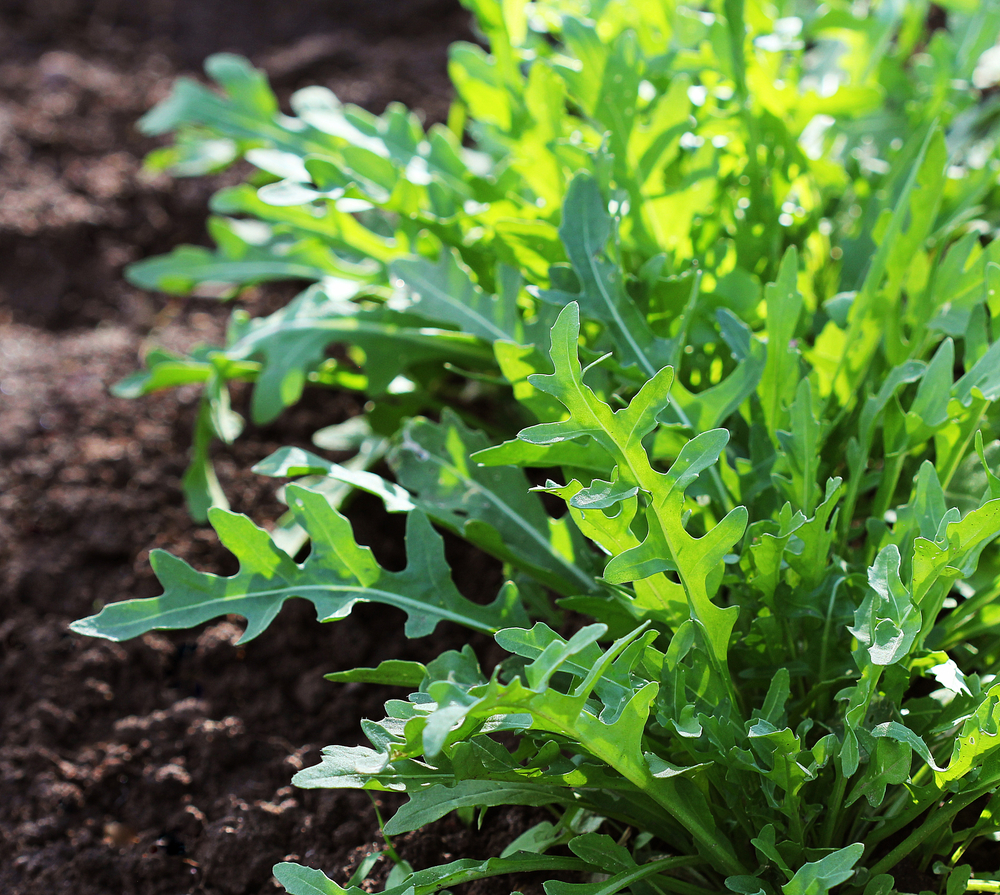
Days to maturity: 40 days after seeding
One of the greatest reasons for growing rocket (arugula) is its distinct peppery flavor.
It also wins points for many gardeners who just don’t know what to plant when the soil is too cold for anything else.
As an even bigger bonus, you can sow arugula seeds both in spring and fall (they have a high germination rate, so be ready to thin them out). This allows you to harvest two crops of very nutritious leafy greens.
All it takes to grow arugula is full sun to partial shade, not a lot of heat and sufficient water. It is pretty easy to grow. Just watch out for those flea beetles though, they know a good thing when they see it.
Look out for different varieties of arugula to try, that way you can diversify your salad greens even in a cool climate. Astro, Red Dragon, Italian Cress, Garden Tangy, Sylvetta and more.
2. Beans
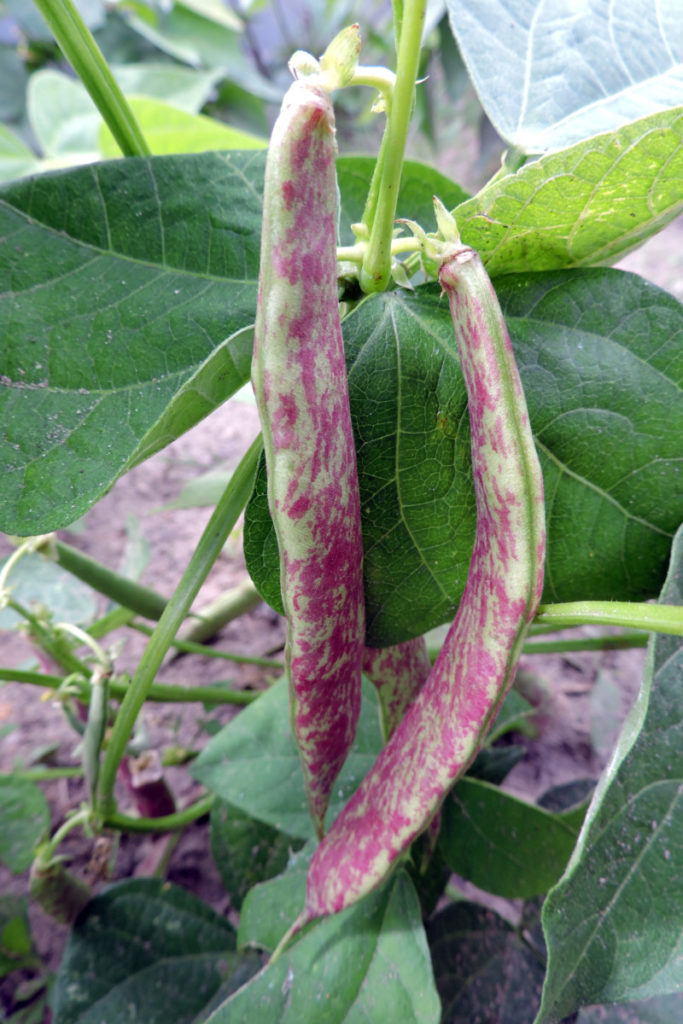
Days to maturity: 50-120 days, depending on variety
Are beans really a magical fruit? No, not in that sense… Rather in the fact that there are so many varieties that are ready to harvest in a reasonable amount of time. This makes them perfect for growing in the backyard garden.
In the case of growing beans, there is a wide range in the amount of days from sowing to harvest. This is highly dependent on the type of beans you are planting. Are they bush beans or climbing beans? Or are they dry beans? The latter takes the longest to mature.
Bean varieties to try:
- Jacob’s Cattle – dry bush bean, 90 days to maturity
- Dragon’s Tongue, bush bean, 60 days to maturity
- Amethyst, bush bean, 56 days to maturity
- Scarlet Runner, pole bean, 65 days to maturity
- Cherokee Wax, bush beans, 50 days to maturity
There are so many varieties of beans that it can be hard to choose. Decide first what you want them for: snap beans, dry beans, green beans, lima beans, etc. Go for flavor and texture; color, if you care about how they decorate your garden.
Most of all, bring some variety of beans into your garden, because they are among the easiest vegetables to grow.
3. Beets
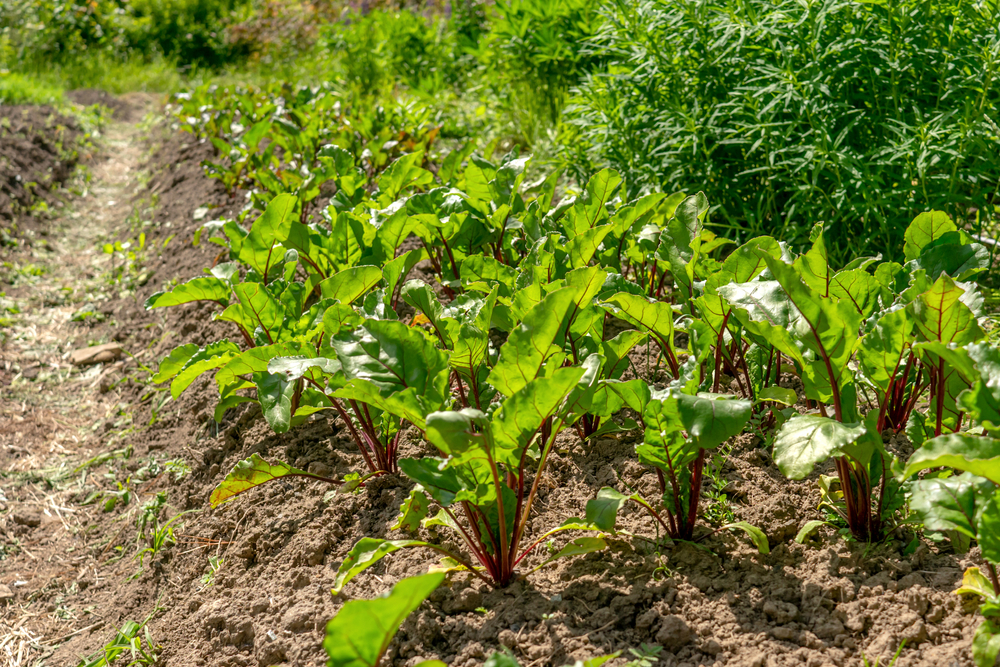
Days to maturity: 45-70 days
While beets aren’t usually the first vegetable that gardeners dream of, they do have their merits. First of all, they are easy to grow by direct sowing the seeds in the soil. No need for fussy potting soil in containers, or replanting them when the time is right.
Beets also have the evolutionary advantage to survive frost and near-freezing temperatures. Combine that with some great tasting, short season varieties and you’ve got the potential for a winter-warming borscht on the way. Or beet wine. Whichever way you choose to stay cozy by the fire.
- Chioggia beets, 54 days to maturity
- Burpee’s Golden beet, 50-55 days to maturity
- Cylindra beetroot, 54 days to maturity – the best beet for canning!
Here are 33 beet recipes to get you inspired. Don’t forget to eat your beet leaves too!
4. Broccoli
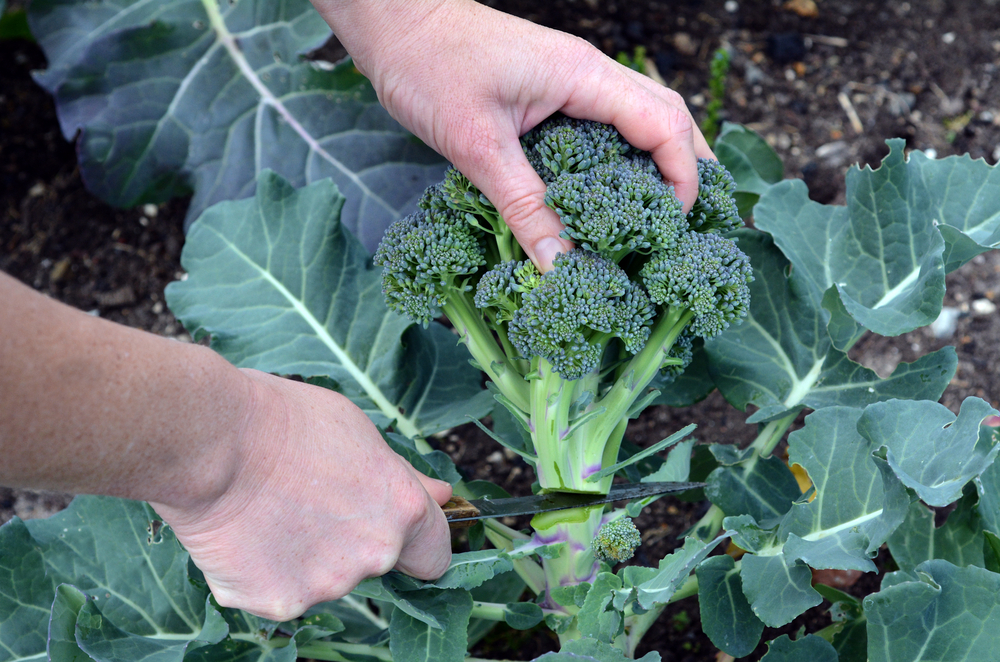
Days to maturity: 55-85 days from transplant to harvest, more than 100 days if direct seeding
While broccoli is a cold-hardy vegetable, it is among the list of vegetables that take longer to reach maturity.
We’ve included it here, because there are a couple of faster growing varieties that you need to know about.
- Calabrese, mature 60-90 days after transplanting
- Spring Raab, 42 days to maturity
- Di Cicco, 50 days to maturity
These varieties may not produce those huge heads you purchase at the supermarket, though there is more to broccoli than it first seems. As long as it is not woody, you can eat the entire stem. Which gives you, the home broccoli grower, so much more to eat.
5. Bunching onions, aka scallions or green onions
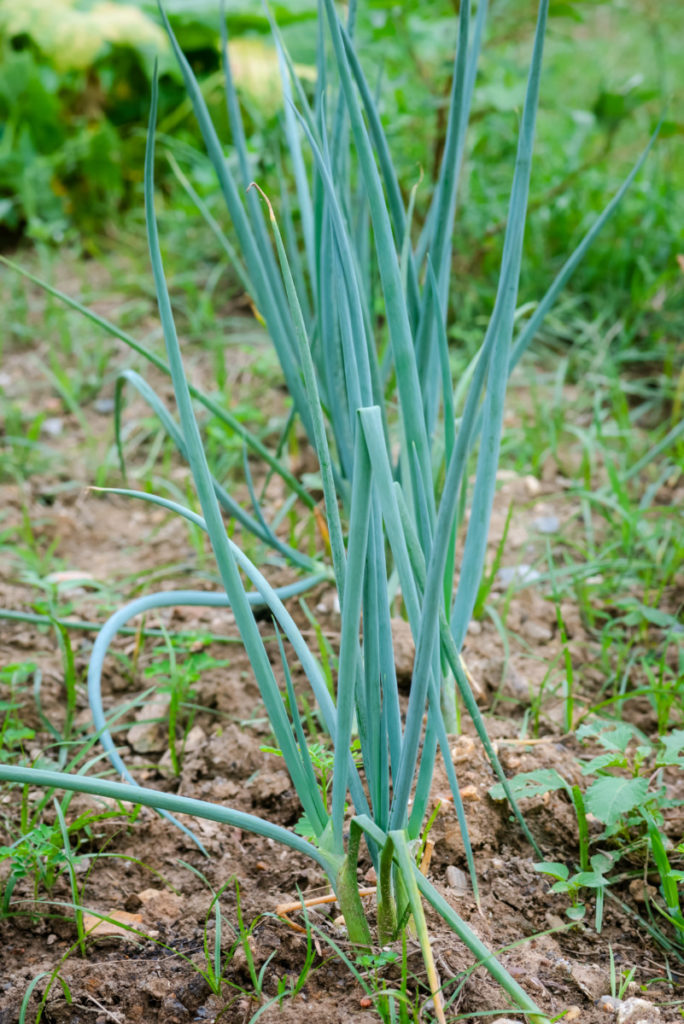
Days to maturity: as soon as 20-30 days after planting
Onions that do not produce a true bulb, but are better known for their green leaves are bunching onions. You’ll often find them bundled in a bunch at the market. Not necessarily where they get their name, however it is a good association.
More importantly, green bunching onions have a mild onion flavor that hardly anyone can refuse. They can be eaten straight from the garden, chopped and tossed into salads, or cooked in soups.
Did I mention that they can even act as a perennial when properly mulched?
Everything you need to know about growing them is listed in this article: How to Grow and Harvest Bunching Onions
6. Cabbage
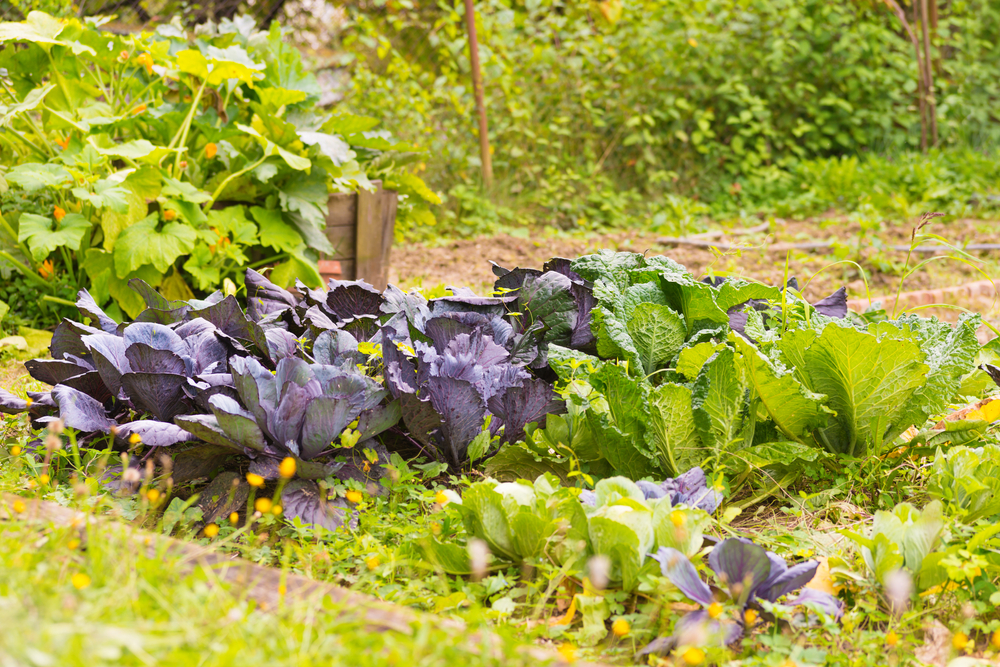
Days to maturity: approximately 70 days
Cabbage is probably the one classic vegetable that everyone associates with cooler climates.
It prefers growing temperatures between 60-70°F (16-21°C), although those numbers can shift slightly lower or higher. In fall, it can withstand frost and freezing temperatures all the way down to 20°F (-6°C).
All things considered, members of the Brassica (cabbage) family are tolerant to cold, but not all of them are short-season crops. Take Brussels sprouts for instance. When the seeds are direct sown in the soil, you are looking at 100-110 days to maturity.
They may still do alright in your colder climate, so by all means, give them a try.
If you’d like to stick to a sure and harvestable bet, take a look at some varieties of cabbage that have proven their worth:
- Savoy cabbage such as Purple Alcosa, 65 days to maturity
- Early Jersey Wakefield, 70 days to maturity
- Red Express cabbage, ready to harvest 60 days from transplant
- Brunswick cabbage, 90 days to maturity
Test out different varieties in your garden to see what grows best for you.
Related reading: How To Grow Perennial Cabbage & 7 Varieties To Try
7. Carrots
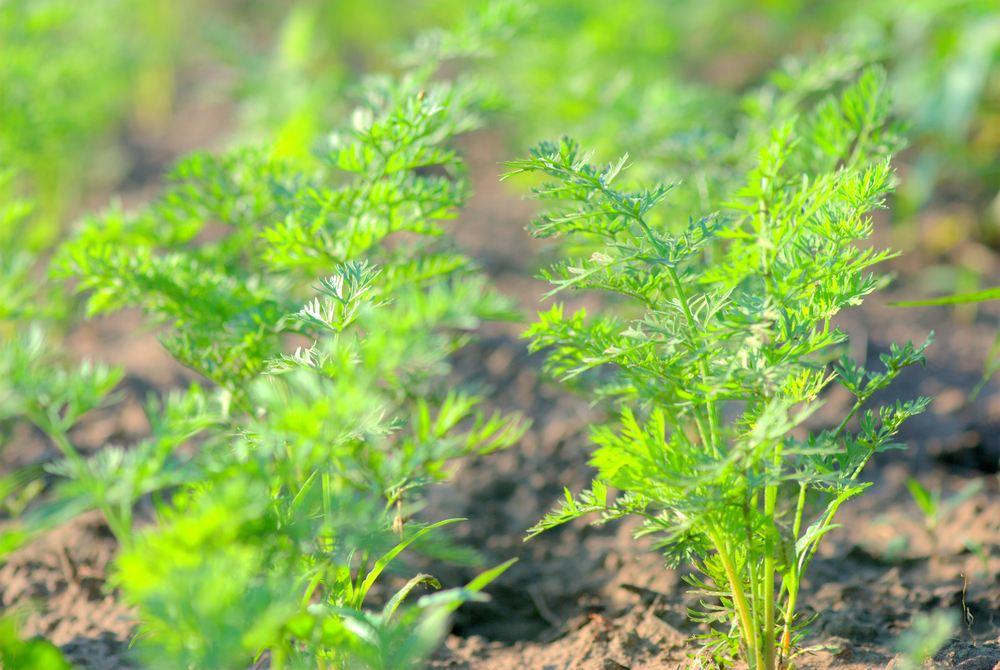
Days to maturity: 65-80 days
Carrots are ready to harvest after two months of being in the soil. However, if you’d like to munch on them earlier, baby carrots can be pulled up in about 30 days.
As long as you sow the seeds in time, carrots can even survive temperatures as low as 15°F. That is, at least the roots below the ground. The carrot leaves will die back, so you’ll want to harvest the carrot tops/leaves ahead of any cold spells.
In the search for carrot varieties to grow in your garden, you’ll find everything from standard-issue orange to yellow, white and deep purple.
All of them will tolerate cooler temperatures and short growing seasons.
8. Cauliflower
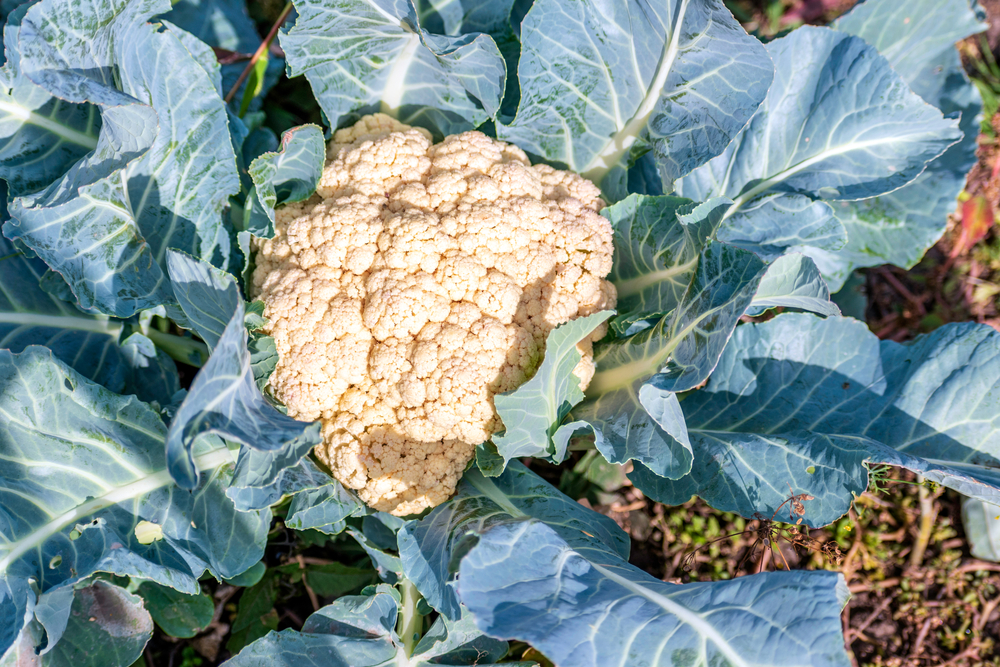
Days to maturity: 62-100 days
Everyone knows the classic white head of cauliflower, but have you seen the beauty of deep purple, lavender and cheddar? Yes, they all exist. And they can be yours for the planting.
If you have been on the lookout for a cold-hardy vegetable that also happens to be low-carb, cauliflower is your friend.
As a surprise bonus, cauliflower leaves are not only edible, they are deliciously nutritious too. They can be used in place of chard, kale or spinach, three more cool-season vegetables we’ll get to in a moment.
9. Garlic
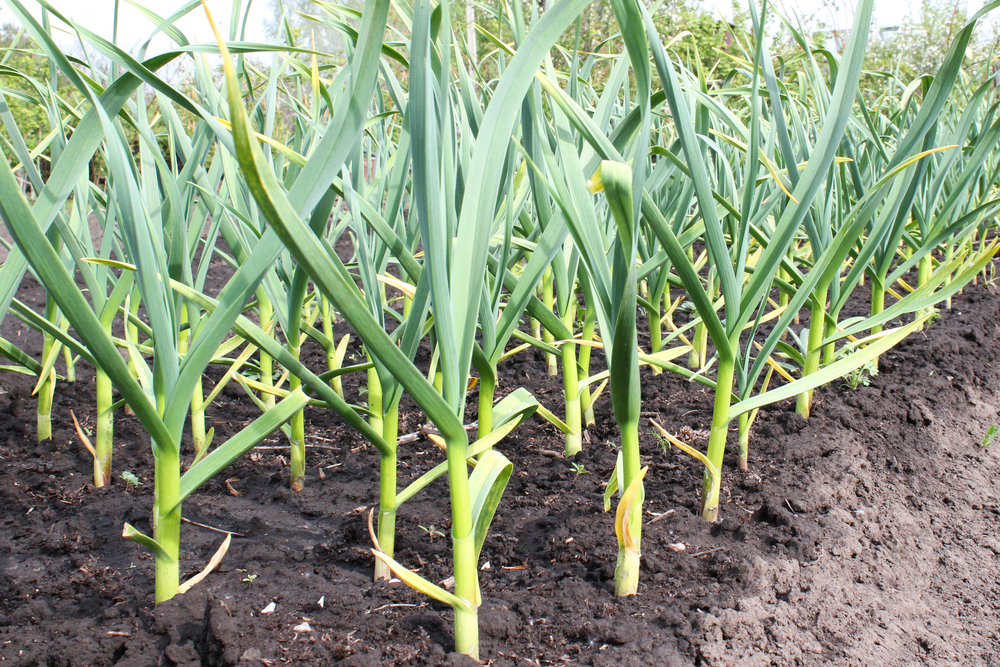
Days to maturity: approximately 90 days
If you aren’t sure when the best time to plant your garlic in spring is, think again. The best time to plant your garlic is in the fall. When done this way, your garlic comes up when it is ready – not when you are.
When you don’t have to focus so much on the weather and last frost dates, you can plan for sowing your other garden seeds.
Seriously though, if you absolutely love garlic or want to grow it for its many health benefits, know that it grows well in cooler climates too. In fact, growing garlic may be even more difficult in warm climates. So, plant as many cloves as you can fit into those extra spaces in your garden.
Don’t forget to include garlic in your companion planting scheme.
10. Ground Cherry
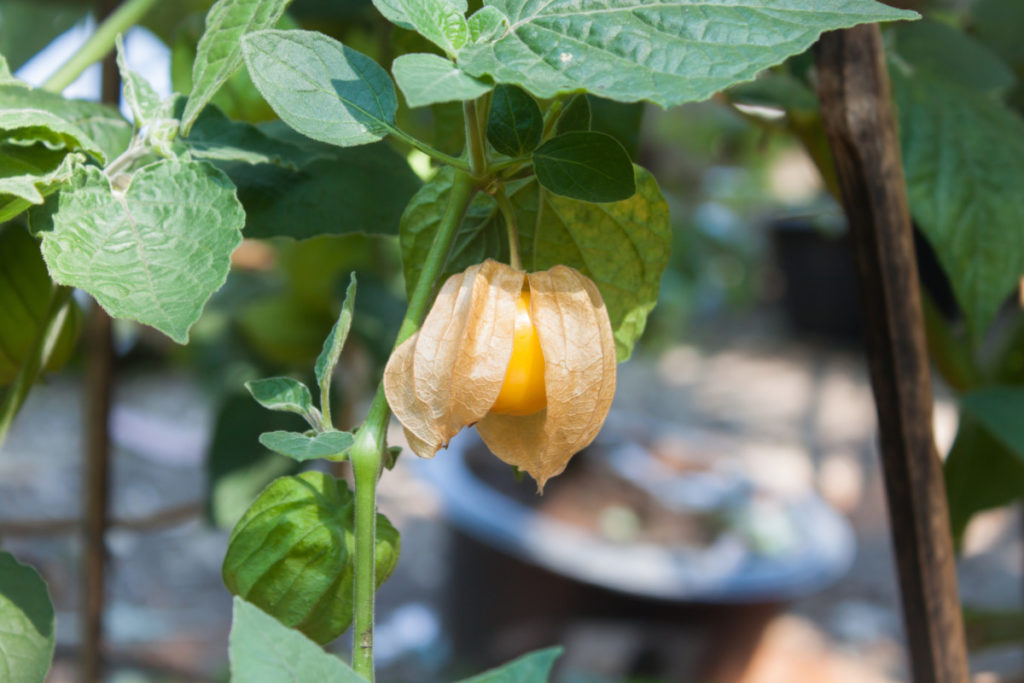
Days to maturity: 60-80 days after transplanting
An unassuming little fruit to make the list of short-season crops for colder climates, is the ground cherry. Commonly called cape gooseberry by another name.
What’s so great about them, besides the incredible flavor (looking for a ground cherry jam recipe?), is that they are also perfect for container gardening.
Planted this way, in containers, you can grow as few – or as many – as you want to sample for the first time. If the temperatures dip down quickly, you can always bring your container plants into warmth.
11. Lettuce
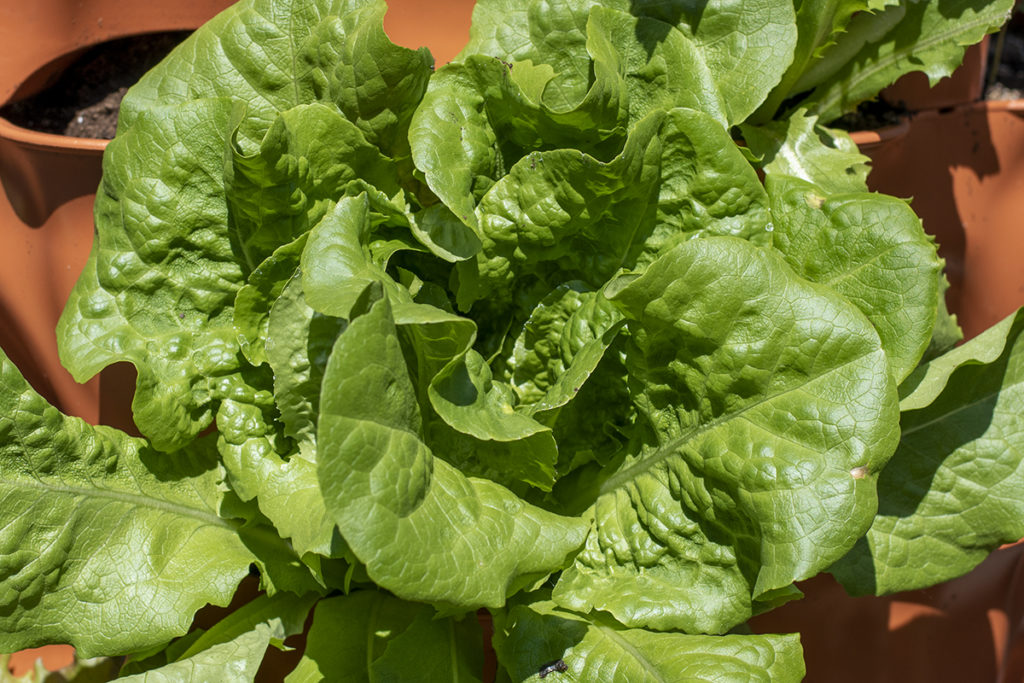
Days to maturity: 30-60 days
Lettuce is a somewhat forgiving plant that grows quickly.
Not only is it prized for its fast growth rate, there are so many varieties of lettuce to choose from. To keep your salads interesting and entertaining, of course.
4 main types of lettuce
- Loose leaf/cut-and-come again lettuce
- Romaine/Cos lettuce
- Butterhead/Bibb lettuce
- Crisphead/Iceburg lettuce
Within those lettuce types you’ll discover several varieties that are particularly cold-hardy. Arctic King, North Pole, Buttercrunch – give them all a try.
12. Mustard greens
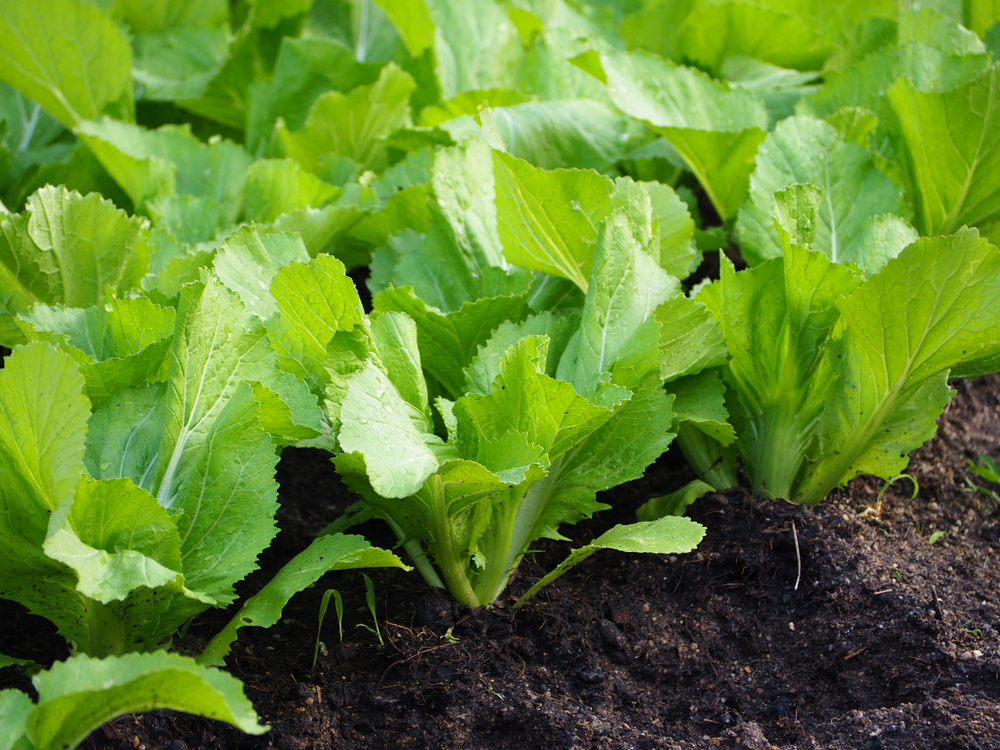
Days to maturity: 30-45 days
Besides lettuce, another even more reliable source of greens to grow in your garden are mustard greens.
Mustard greens can tolerate light frosts, even surviving into the mid-20s or lower.
Why would you want to harvest greens so late in the season? Well, simply because they are full of vitamins K, C and A. Mustard greens also contain generous amounts of calcium, copper, manganese and iron. The better question is why are you not already growing them?
This article from the Grow Network: Mustard Greens: What You Need to Know Before You Grow (With Recipe) says it all.
13. Kale
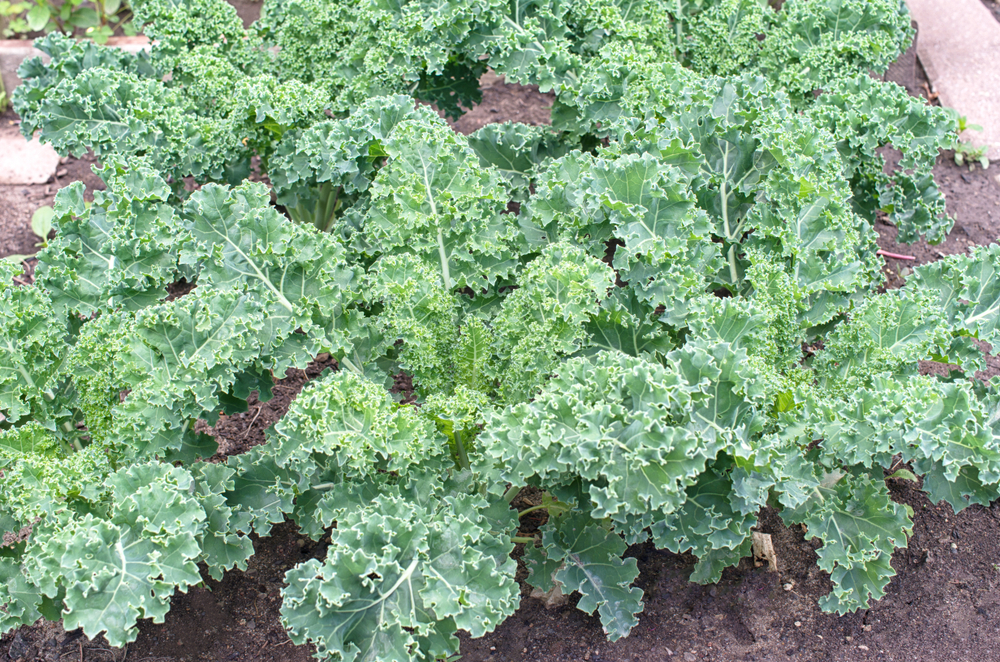
Days to maturity: 70-80 days from seed, 55 days from transplant
Have you ever paid full price for a bag of kale chips and thought: “I could make those at home for a fraction of the price!“?
When you grow kale in the garden, the chance to make homemade kale chips is all yours. Is growing a patch of kale worth it? It totally is.
Kale can be both spring and fall planted, though many gardeners say that the cold brings out the flavor. So, fall is often the preferred growing period. In that case, be sure to set out your kale transplants 6-8 weeks before the first autumn frost.
Kale also gets bonus points for being a vegetable that can be grown in partial shade.
Best kale varieties to grow:
- Dwarf Blue Curled, 65 days to maturity
- Red Ursa Kale, 65 days to maturity
- Lacinato Kale, 62 days from transplant
No matter what variety of kale you choose to grow, know that they are all cold-hardy, making them a perfect addition to your cold-weather garden.
14. Kohlrabi

Days to maturity: 45-60 days
Kohlrabi is an underrated vegetable that deserves some special attention.
As with other cole crops, it is not just the bulb that can be eaten; the leaves can be added to salads, soups and stews as well. In essence, all of the above-ground parts are edible.
Kohlrabi grows best in cool temperatures 40°F and 75°F (4.5°C and 23.9°C). If the upper end of the temperature range is your summer climate, then great. You’ll easily be able to grow it in your garden.
If you love kohlrabi, but live in a warmer climate, you might try growing it over the winter months instead.
Kohlrabi varieties to plant for cooler weather
- Early White Vienna, 50-55 days to maturity
- Early Purple Vienna, 60 days to maturity
- Delicatesse Blue, 60 days to maturity
15. Parsley
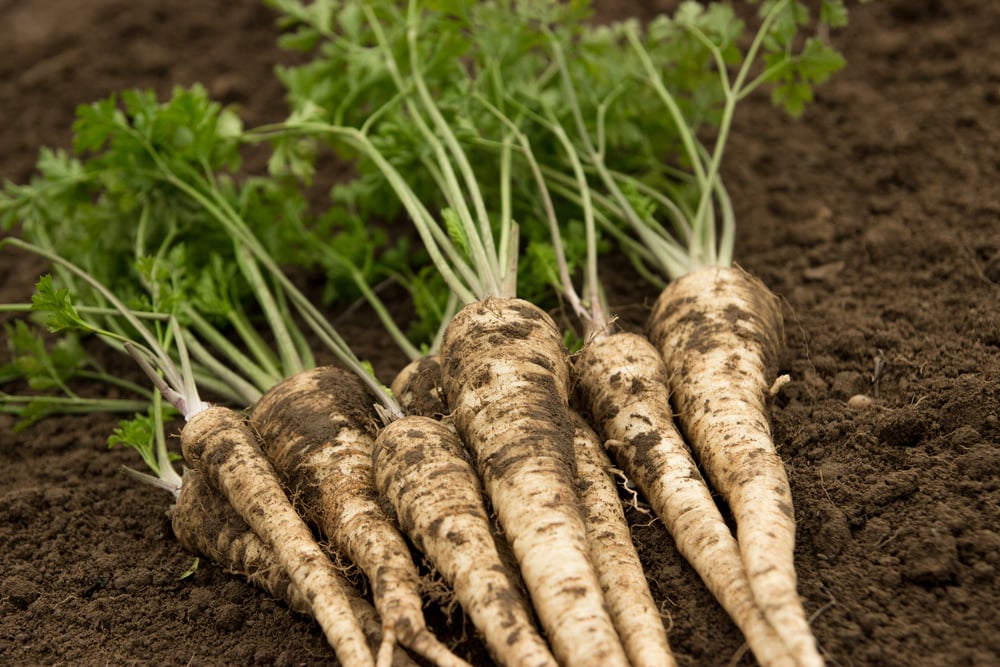
Days to maturity: 90 days for the root, 30 days for the greens
Parsley root is a cool-season crop that prefers growing temperatures between 60° to 65°F. Yet, it can also tolerate temperatures down to 10°F, making it a cold-hardy plant indeed.
Even though it takes a long time for the root to mature, you don’t need to wait for it to grow full size. You can harvest the immature roots as needed, or head straight for the leafy, nutritious greens.
While there is an array of parsley varieties to choose from (more than 30!), there are two main kind: curly-leaf and flat-leaf or Italian parsley. All are rich in iron, as well as vitamins A and C.
16. Peas
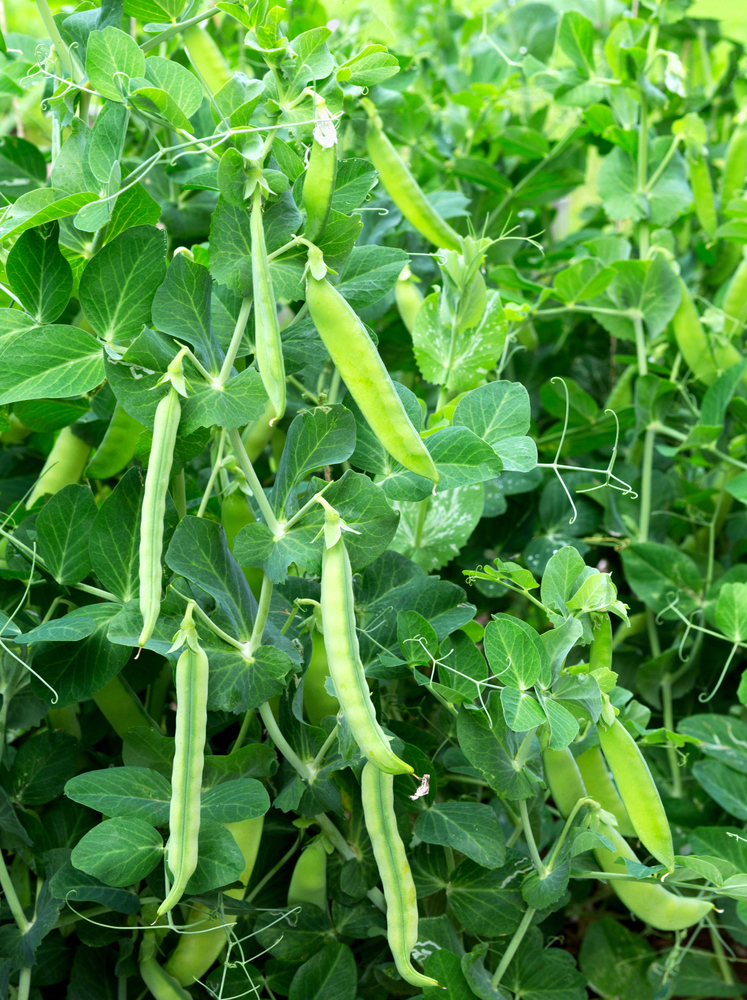
Days to maturity: 60-80 days
A general rule of thumb is that peas can be planted as soon as the soil has thawed. Instant proof that they are tolerant to cooler temperatures.
Depending on the variety you sow, you can be enjoying your first harvest in just two months. So, what will it be: English peas, sugar-snap peas or snow peas?
- Oregon Giant, 70 days to maturity
- Sugar Snap, 58 days to maturity
- Green Arrow Peas, 62-70 days to maturity
- Mammoth Melting, 62-75 days to maturity
- Tom Thumb, 50 days to maturity
If you grow more peas than you can eat, freezing them for later is the easiest way to preserve them.
17. Radishes
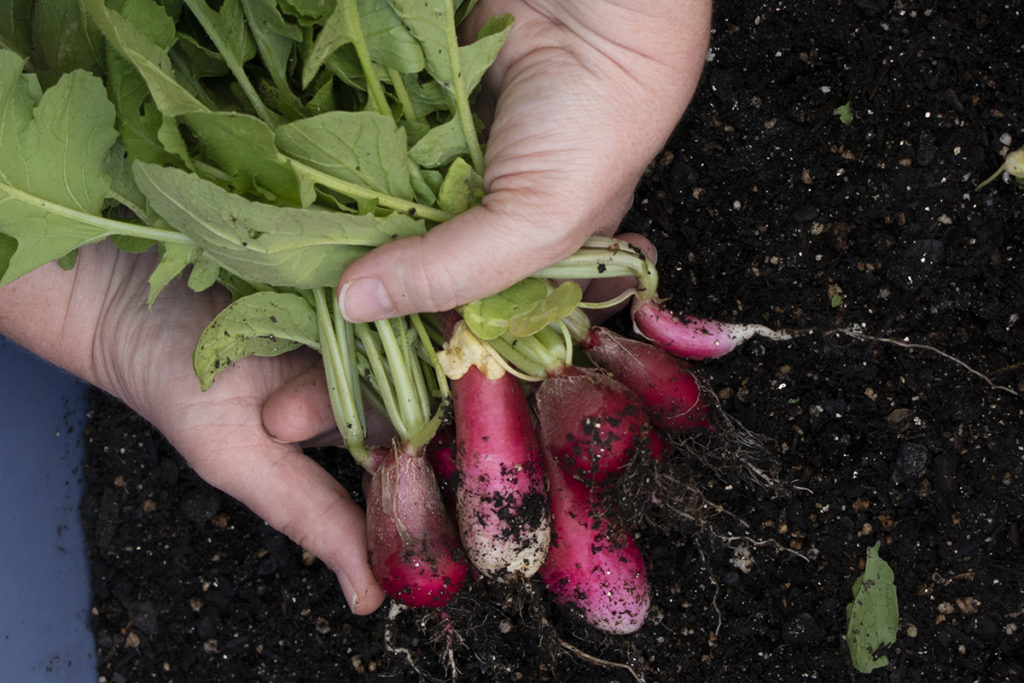
Days to maturity: 22-55 days
For some reason, I always end up eating more radish pods each summer than actual radishes – you do like pickled radish pods, right? In our garden, the radishes’ demise starts with flea beetles. Perhaps that is because it is one of the first seeds to sow in our garden.
Wildly fluctuating temperatures are a growing issue, too much rain can give insult to injury and insects love them. Never fear, many people have radishing successes to boast.
There is even an article written by Tracey on the subject that you might want to take a look at, should you wish to grow your own: How to Grow Your Best Radishes Yet – Seed To Table In 25 Days Or Less
Sow some seeds direct in the soil or in your container garden as you try out these radish varieties:
- French Breakfast
- Cherry Belle
- Crimson Giant
- Ilka
- Plum Purple
- Scarlet Globe
- Daikon
- Easter Egg Radish and more
18. Spinach
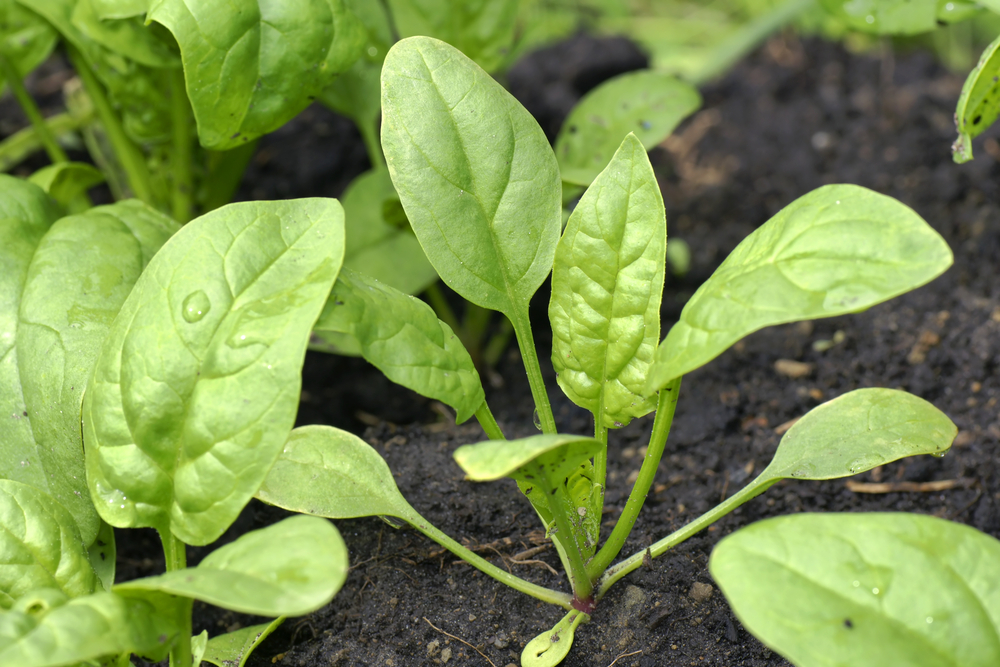
Days to maturity: 40-45 days
Outside of eating weeds, spinach is a logical choice to plant if you truly enjoy eating your greens.
Not just the Popeye kind of spinach, but perpetual spinach too. They are part of those 15 seeds you can sow to harvest food in less than a month.
Granted, they will be baby spinach leaves. Yet, it is still something to eat. Let them grow a couple weeks longer till they are full size for the full effect.
Better yet, practice succession planting with lettuce, radishes, beet and other salad greens to really grow a harvest worth sharing.
- Bloomsdale Long Standing
- Nobel
If you won’t be saving your own garden seeds, don’t forget about the many F1 hybrids that are available.
19. Swiss Chard
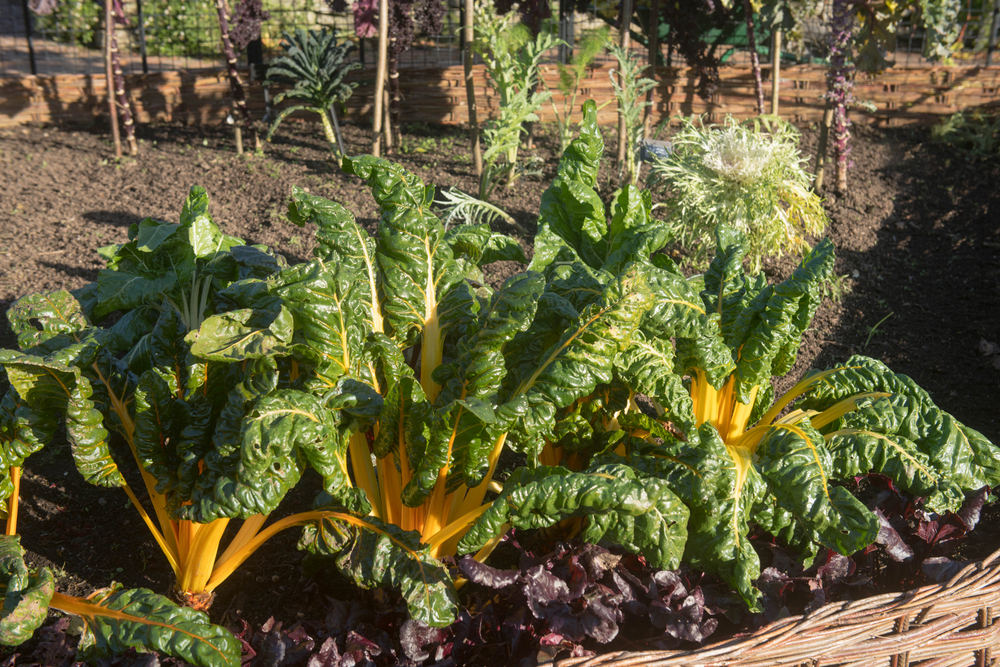
Days to maturity: 50-60 days
While Swiss chard might not be the top vegetable to add to your grocery list, it should be one of the first to plant in your garden.
Why?
Chard is a steady producer, it thrives in cool climates and you can eat from it all summer-fall long.
It’s like spinach, only larger (with leaves 24″ long!), more flavorful and even more versatile to cook with.
Not only is it green, you can also grow a rainbow chard mix. This gifts you with red, yellow, white and pink stalks to add to your delight around the dinner table.
Related reading: 7 Easy & Delicious Ways To Eat Swiss Chard
20. Turnips
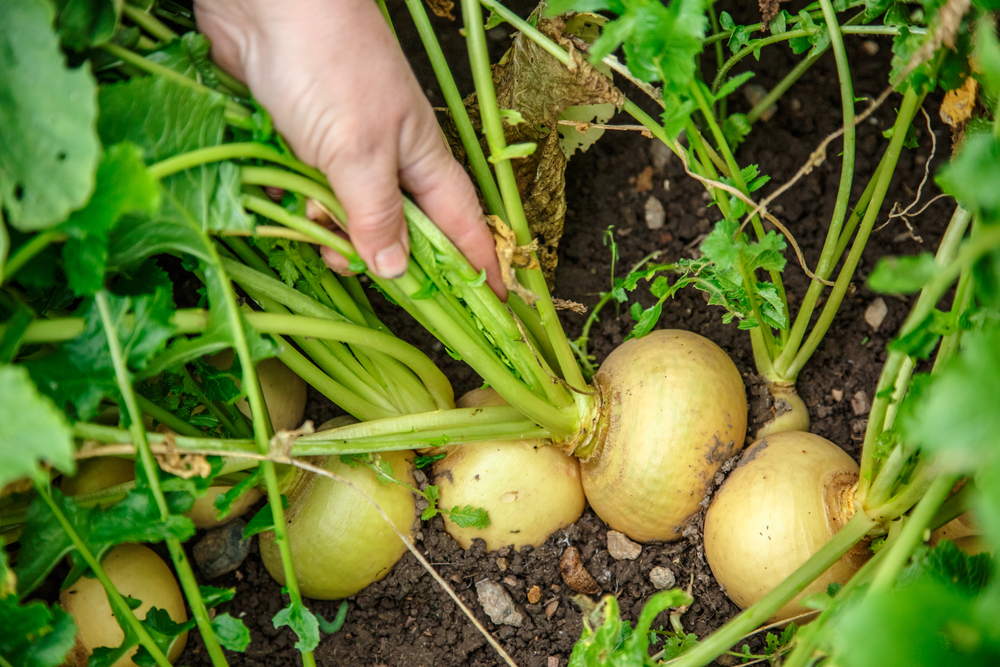
Days to maturity: 30-60 days
Like chard, turnips don’t often appear on the list of likeable veggies, but hear me out. We don’t always get to eat what we like the best – that would be boring.
The other thing is, turnips don’t taste all that bad. In fact, they taste pretty darn amazing when cooked the right way. Or when eaten raw; turnip leaves are rich in vitamins A and C.
If you have been on the lookout for a cold-hardy vegetable that has been around since at least the Middle Ages, look no further than the humble turnip. Turnips are also loaded with vitamins K, E, B1, B2, B3, B5, B6 and minerals: potassium, magnesium, iron, calcium, copper and manganese.
Now you have the chance to help bring this former survival food back in fashion:
21. Zucchini
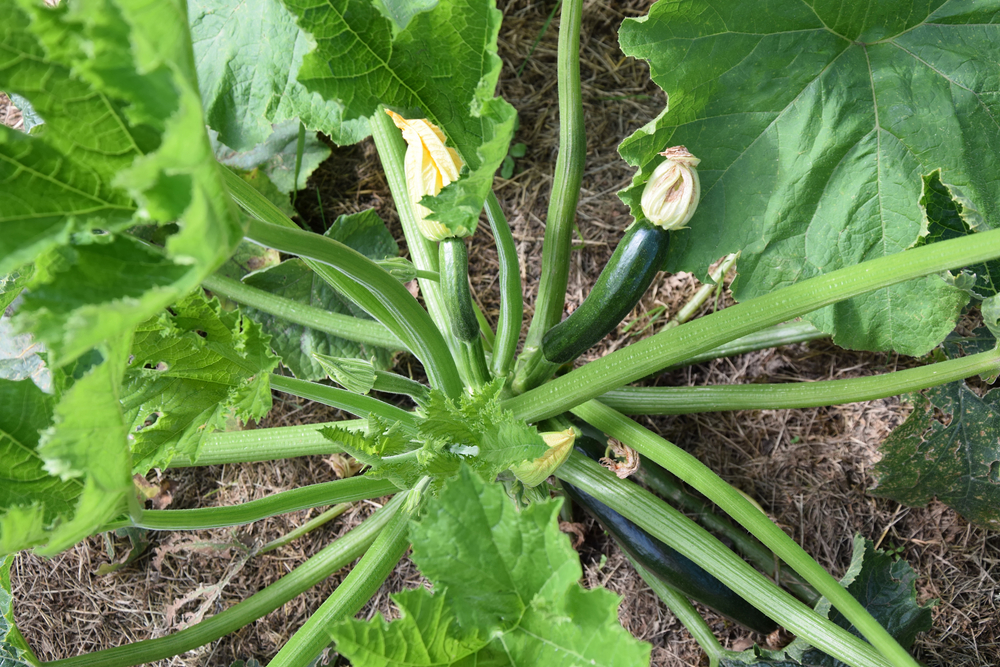
Days to maturity: 45-65 days
Zucchini is one of those garden vegetables that grows no matter what. That is, unless you are making some of these zucchini-growing mistakes.
If you are ready and willing, you can even increase your chances of a bumper crop by planting zucchini next to beneficial plants. This is otherwise known as companion planting.
Still, if you are on a quest for garden abundance, zucchini hardly ever lets you down. Sow the seeds, watch the plants grow as they greatly expand their leaves, observe the flowers, then forget about them for a few weeks.
The next time you step foot in the garden, you will be pleasantly surprised to meet a foot-long zucchini. Or maybe ten of them, depending on how many seeds you started with.
Then you can learn how to preserve your zucchini if you can’t bear to give so many fruits of your labor away.
When all is said and done, living in a cooler climate isn’t bad at all. At least we don’t need to hide from the heat – neither do your plants.

Get the famous Rural Sprout newsletter delivered to your inbox.
Join the 50,000+ gardeners who get timely gardening tutorials, tips and tasks delivered direct to their inbox.

